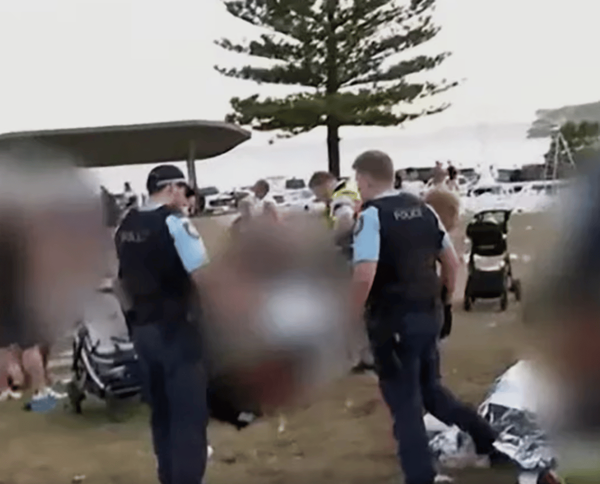On a February night in 1975, as the chief political writer of The Associated Press, I attended the second annual meeting of a new conservative organization for a speech that was to have a historic long-term impact.
The organization was the Conservative Political Action Conference, and the speaker was recently retired California Gov. Ronald Reagan, giving his prescription for a Republican Party that was floundering in the aftermath of President Richard Nizon’s Watergate-precipitated resignation six months earlier.
“Is it a third party we need, or is it a new and revitalized second party, raising a banner of no pale pastels, but bold colors which makes it unmistakably clear where we stand on all of the issues troubling the people?” Reagan asked.
It proved not only the clarion call for Reagan’s nearly successful 1976 primary challenge to Nixon’s unelected successor, Gerald Ford, but for Reagan’s successful 1980 presidential bid. CPAC supporters were in the vanguard, as he transformed the GOP into a more aggressive challenger of the political status quo.
To be sure, Reagan governed as much in “pale pastels” as in “bold colors.” But his rhetoric never lost its boldness from the day he declared that "Government is not the solution to our problem, government is the problem." Ideological successors like Newt Gingrich escalated the rhetoric further.
Now, fast-forward 48 years to another CPAC meeting last weekend, and the speaker who represents this generation’s challenge to the political status quo, former President Donald Trump. If Reagan was CPAC’s hero of the 1970s and 1980s, Trump represents its current incarnation.
To be sure, Trump lacks Reagan’s often genial manner, his graciousness and his willingness to compromise. His sense of “bold colors” makes Reagan’s seem like “pale pastels,” as Saturday night’s typically bombastic, error-laden, misleading diatribe showed.
But just as Reagan proved a more effective challenger to the political establishment than his generation’s other Republicans, Trump poses a far greater threat to the Washington order than his potential 2024 rivals.
He vows dramatic changes in Washington’s “corrupt establishment” if he can match 19th-century President Grover Cleveland’s feat and regain the presidency after losing it.
On Saturday, he said he’d tackle it “stronger, faster and better,” conceding that he knew little about Washington when he first became president because “I was from New York” and previously had made only brief visits to the capital.
“Now, I am experienced, and I know the people of Washington,” Trump said, making clear that, if he returned, he’ll be surrounded by people committed to his goals, rather than the cross-section of Republicans who staffed his prior administration.
“I will totally obliterate the deep state,” he vowed. “I will fire the unelected bureaucrats and shadow forces who have weaponized our justice system like it has never been weaponized before.”
Toward the end of his term, Trump undertook a massive change in the federal civil service, issuing an executive order directing the transfer of thousands of non-political employees who affected policy into a new category without their prior job protections. He ran out of time before his term ended, and President Joe Biden revoked the directive.
But Trump has made clear that, next time, he’ll initiate those changes from the outset, enabling him to replace thousands of civil servants with political appointees committed to his ends.
If anyone doubts him, just look at whom Trump has surrounded himself as he maps his return to power. Those regarded as moderating influences, like daughter Ivanka and son-in-law Jared Kushner, are gone. Remaining are the more hard-line advisers like speechwriter-immigration adviser Stephen Miller.
The fact that Trump again dominated CPAC’s annual straw poll with 62% means only that the organization that once housed various shades of conservatives has become a one-candidate army, dedicated to returning Trump to power.
More significant is the fact, noted in Sunday’s New York Times, that Trump’s advisers are working hard to create the machinery that will maximize their delegate totals during next year’s primaries.
Trump hopes to take advantage of two factors in the GOP delegate selection process that differ from those of the Democrats.
First, the structure of Republican primaries makes it possible for a candidate to get a minority of the vote but a majority of the delegates, both statewide and in districts. Delegates are not divided proportionally.
Second, in many states, the people who become convention delegates are not directly elected in the primaries but are chosen in separate party processes. Though many states require them to vote according to the primary results, they are generally free to follow their consciences, especially if there is ever again a multi-ballot contest.
Trump’s operatives, The Times said, are working hard at the state level to maximize their strength, bolstered by the fact that they start out with a base of committed supporters in every state and every precinct.
It is easy to watch Trump and dismiss much of what he is saying as the ravings of a man disconnected from reality. Party leaders are prone to minimize his chances. That was also true with the GOP establishment when Reagan initially challenged Ford.
But beneath the bombast and the rhetoric, there is — as with Reagan — a solid layer of supporters who will likely keep Trump in the GOP race until the end and would make him a potent, though underdog general election candidate if nominated.







